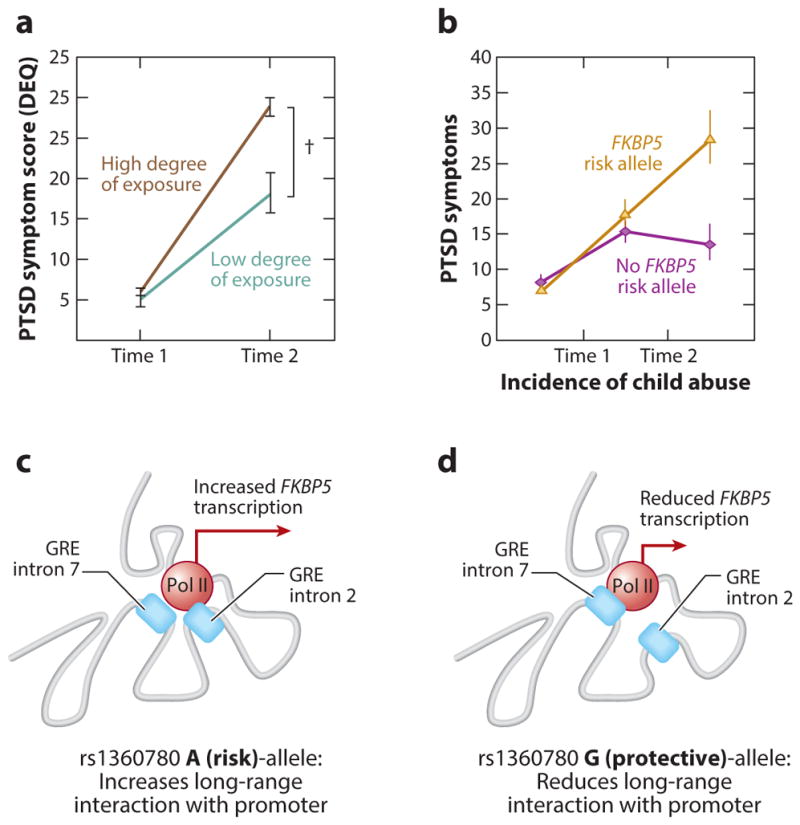Figure 7.

Examples of gene-by-environment (G × E) effects in posttraumatic stress disorder (PTSD). (a) An example of an environmental exposure as a function of time post-trauma, illustrating the severity of PTSD symptoms two to four weeks after a campus shooting by degree of exposure. The graph shows the mean PTSD symptom score [Distressing Event Questionnaire (DEQ)] at time 1 and time 2 (± standard error). A sum ranging from 0 to 2 for positive responses to high-exposure events is classified as a low degree of exposure. (b) An example of G × E exposure as a function of level of childhood trauma exposure, in which an FKBP5 risk allele (tan line) is associated with heightened adult PTSD symptoms following high burdens of childhood trauma compared to the protective allele ( purple line). (c) The risk allele of the rs1360780 SNP in intron 2 of FKBP5 increases the transcriptional output of RNA polymerase II (Pol II) at the transcription start site by increasing the long-distance interactions between the GRE containing intron 2 and the promoter, thus increasing the production of FKBP5 mRNA. (d ) The protective allele reduces the interaction between intron 2 and the promoter, reducing the production of FKBP5 mRNA. by bringing this distal transcriptional enhancer in close proximity to the promoter, therefore curbing the ultrashort HPA axis feedback loop in which FKBP5 participates. This prolonged homeostatic perturbation results in lasting alterations in the neural circuits governing stress and anxiety.
